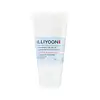What's inside
What's inside
 Key Ingredients
Key Ingredients

 Benefits
Benefits

 Concerns
Concerns

 Ingredients Side-by-side
Ingredients Side-by-side

Water
Skin ConditioningButylene Glycol
HumectantGlycerin
HumectantEthylhexyl Stearate
EmollientDimethicone
EmollientDicaprylyl Carbonate
EmollientBehenyl Alcohol
EmollientStearic Acid
CleansingPalmitic Acid
EmollientCetyl Ethylhexanoate
EmollientHydrogenated Poly(C6-14 Olefin)
Emollient1,2-Hexanediol
Skin ConditioningArachidyl Alcohol
EmollientC14-22 Alcohols
Emulsion StabilisingCetyl-Pg Hydroxyethyl Palmitamide
Skin ConditioningPolyacrylate-13
Mannitol
HumectantArachidyl Glucoside
EmulsifyingC12-20 Alkyl Glucoside
EmulsifyingHydrogenated Polyisobutene
EmollientGlyceryl Caprylate
EmollientEthylhexylglycerin
Skin ConditioningPolyglyceryl-10 Laurate
Skin ConditioningHydrogenated Lecithin
EmulsifyingEthylhexyl Palmitate
EmollientDimethiconol
EmollientPanax Ginseng Root Water
MaskingCarbomer
Emulsion StabilisingSorbitan Isostearate
EmulsifyingAcrylates/Ammonium Methacrylate Copolymer
Scutellaria Baicalensis Root Extract
AstringentPropanediol
SolventCholesterol
EmollientSilica
AbrasivePrunus Mume Fruit Extract
HumectantArachidic Acid
CleansingGlycine Max Oil
EmollientSqualane
EmollientMadecassoside
AntioxidantPolyglyceryl-10 Pentastearate
Skin ConditioningTocopherol
AntioxidantCeramide NP
Skin ConditioningOleic Acid
EmollientPhytosphingosine
Skin ConditioningPentylene Glycol
Skin ConditioningDipotassium Glycyrrhizate
HumectantCanola Oil
EmollientRosmarinus Officinalis Leaf Extract
AntimicrobialWater, Butylene Glycol, Glycerin, Ethylhexyl Stearate, Dimethicone, Dicaprylyl Carbonate, Behenyl Alcohol, Stearic Acid, Palmitic Acid, Cetyl Ethylhexanoate, Hydrogenated Poly(C6-14 Olefin), 1,2-Hexanediol, Arachidyl Alcohol, C14-22 Alcohols, Cetyl-Pg Hydroxyethyl Palmitamide, Polyacrylate-13, Mannitol, Arachidyl Glucoside, C12-20 Alkyl Glucoside, Hydrogenated Polyisobutene, Glyceryl Caprylate, Ethylhexylglycerin, Polyglyceryl-10 Laurate, Hydrogenated Lecithin, Ethylhexyl Palmitate, Dimethiconol, Panax Ginseng Root Water, Carbomer, Sorbitan Isostearate, Acrylates/Ammonium Methacrylate Copolymer, Scutellaria Baicalensis Root Extract, Propanediol, Cholesterol, Silica, Prunus Mume Fruit Extract, Arachidic Acid, Glycine Max Oil, Squalane, Madecassoside, Polyglyceryl-10 Pentastearate, Tocopherol, Ceramide NP, Oleic Acid, Phytosphingosine, Pentylene Glycol, Dipotassium Glycyrrhizate, Canola Oil, Rosmarinus Officinalis Leaf Extract
Water
Skin ConditioningGlycerin
HumectantPropanediol
SolventCaprylic/Capric Triglyceride
MaskingSorbitan Stearate
EmulsifyingCarthamus Tinctorius Seed Oil
MaskingCetearyl Alcohol
EmollientGlyceryl Stearate
EmollientStearic Acid
CleansingDimethicone
EmollientMyristoyl/Palmitoyl Oxostearamide/Arachamide Mea
Skin ConditioningTocopheryl Acetate
AntioxidantPhytosterols
Skin Conditioning1,2-Hexanediol
Skin ConditioningCaprylyl Glycol
EmollientBisabolol
MaskingXanthan Gum
EmulsifyingTropolone
Skin ConditioningMethyl Caprooyl Tyrosinate
Skin ProtectingArginine
MaskingCarbomer
Emulsion StabilisingSodium Hyaluronate
HumectantWater, Glycerin, Propanediol, Caprylic/Capric Triglyceride, Sorbitan Stearate, Carthamus Tinctorius Seed Oil, Cetearyl Alcohol, Glyceryl Stearate, Stearic Acid, Dimethicone, Myristoyl/Palmitoyl Oxostearamide/Arachamide Mea, Tocopheryl Acetate, Phytosterols, 1,2-Hexanediol, Caprylyl Glycol, Bisabolol, Xanthan Gum, Tropolone, Methyl Caprooyl Tyrosinate, Arginine, Carbomer, Sodium Hyaluronate
 Reviews
Reviews

Ingredients Explained
These ingredients are found in both products.
Ingredients higher up in an ingredient list are typically present in a larger amount.
1,2-Hexanediol is a synthetic liquid and another multi-functional powerhouse.
It is a:
- Humectant, drawing moisture into the skin
- Emollient, helping to soften skin
- Solvent, dispersing and stabilizing formulas
- Preservative booster, enhancing the antimicrobial activity of other preservatives
Carbomer is a polymer of acrylic acid. Its main role is to create a gel consistency.
A high amount of carbomer can cause pilling or balling up of products. Don't worry, most products contain 1% or less of carbomer.
Dimethicone is a type of synthetic silicone created from natural materials such as quartz.
What it does:
Dimethicone comes in different viscosities:
Depending on the viscosity, dimethicone has different properties.
Ingredients lists don't always show which type is used, so we recommend reaching out to the brand if you have questions about the viscosity.
This ingredient is unlikely to cause irritation because it does not get absorbed into skin. However, people with silicone allergies should be careful about using this ingredient.
Note: Dimethicone may contribute to pilling. This is because it is not oil or water soluble, so pilling may occur when layered with products. When mixed with heavy oils in a formula, the outcome is also quite greasy.
Learn more about DimethiconeGlycerin is already naturally found in your skin. It helps moisturize and protect your skin.
A study from 2016 found glycerin to be more effective as a humectant than AHAs and hyaluronic acid.
As a humectant, it helps the skin stay hydrated by pulling moisture to your skin. The low molecular weight of glycerin allows it to pull moisture into the deeper layers of your skin.
Hydrated skin improves your skin barrier; Your skin barrier helps protect against irritants and bacteria.
Glycerin has also been found to have antimicrobial and antiviral properties. Due to these properties, glycerin is often used in wound and burn treatments.
In cosmetics, glycerin is usually derived from plants such as soybean or palm. However, it can also be sourced from animals, such as tallow or animal fat.
This ingredient is organic, colorless, odorless, and non-toxic.
Glycerin is the name for this ingredient in American English. British English uses Glycerol/Glycerine.
Learn more about GlycerinPropanediol is an all-star ingredient. It softens, hydrates, and smooths the skin.
It’s often used to:
Propanediol is not likely to cause sensitivity and considered safe to use. It is derived from corn or petroleum with a clear color and no scent.
Learn more about PropanediolStearic Acid is a fatty acid. It is an emollient, emulsifier, and texture enhancer.
As an emollient, stearic acid helps soften skin. It aids the skin's protective barrier by preventing water loss. It also provides a gentle cleansing effect without stripping away natural oils.
Stearic acid may also be used to enhance the texture of products. It can add volume and stabilize ingredients such as water and oil. This can help water and oil ingredients from separating.
Sources of stearic acid include animal or vegetable fats/oils such as coconut or shea. It can be naturally found in butter, cocoa butter, shea butter, vegetable fats, and animal tallow.
This ingredient may not be Malassezia folliculitis, or fungal-acne safe.
Learn more about Stearic AcidWater. It's the most common cosmetic ingredient of all. You'll usually see it at the top of ingredient lists, meaning that it makes up the largest part of the product.
So why is it so popular? Water most often acts as a solvent - this means that it helps dissolve other ingredients into the formulation.
You'll also recognize water as that liquid we all need to stay alive. If you see this, drink a glass of water. Stay hydrated!
Learn more about Water